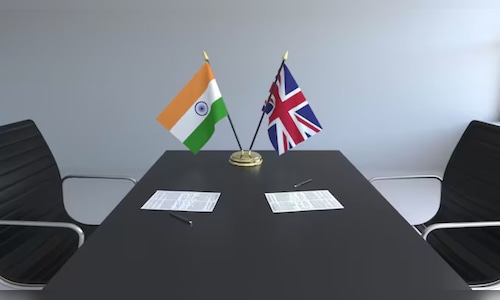Our Terms & Conditions | Our Privacy Policy
India-UK FTA | The double contribution convention explained
India and the United Kingdom have successfully concluded negotiations for a landmark free trade agreement (FTA), marking a significant milestone in their growing economic partnership. The deal, the first major trade pact between the two nations, is expected to boost bilateral trade and deepen economic collaboration with the target of doubling bilateral trade between India and UK to $120 billion by 2030.
The bilateral trade between India and the UK increased to $21.34 billion in 2023-24 from $20.36 billion in 2022-23. The average duty on goods imported from India into the UK is 4.2%.
The FTA builds on discussions held between Prime Ministers Narendra Modi and Keir Starmer at the G-20 summit in Rio de Janeiro in November 2024. Following this, intense FTA negotiations resumed in February 2025, led by India’s Commerce and Industry Minister Piyush Goyal and UK Secretary of State Jonathan Reynolds, along with their teams.
One of the key aspects of the FTA is the double contribution convention, which has been hailed as a game-changer for Indian workers in the UK.
“The signing of the Double Contribution Convention alongside the UK-India Free Trade Agreement is a landmark step that will ease the cost burden for Indian companies sending talent abroad, especially in the IT and consulting sectors. By eliminating dual social security contributions, India enhances its global competitiveness while ensuring greater mobility for professionals. Coupled with reduced tariffs and wider market access under the FTA, this move is poised to catalyse export-led growth and investment flows—particularly in sectors like auto components, IT etc. This is a win-win for both economies and a strong signal of India’s rising stature in global trade diplomacy,” said Atul Pandey, Partner, Khaitan & Co.
According to a government release, “The exemption for Indian workers who are temporarily in the UK, and their employers from paying social security contributions in the UK for a period of three years, will lead to significant financial gains for Indian service providers. This will enhance their competitiveness in the UK market, create new job opportunities, and benefit a large number of Indians working in the UK.”
What is the double contribution convention?
The double contribution convention is a key component of the India-UK FTA, designed to prevent individuals from paying double social security contributions when they work or live in both countries. Social security contributions are payments made by workers and employers to fund pensions, healthcare, unemployment benefits, and other welfare programmes.
India already has social security agreements (SSAs) with countries like Belgium, Germany, Switzerland, France, Denmark, Korea, and the Netherlands, where Indian employees do not have to contribute to social security schemes. Instead they (and their employers) can continue with social security schemes run by the Employees’ Provident Fund Organisation (EPFO) here in India while serving abroad.
However, it was a different story in the UK, where Indian businesses were reeling under the extra cost burden. The compulsory National Insurance (NI) contributions of skilled Indian workers in the UK on temporary visas cost an additional £500 per employee a year, over and above all other taxes and health surcharge paid towards the National Health Service (NHS), as per a 2021 data.
In a globalised world, many individuals work in multiple countries. Without this convention, someone working in both India and the UK could be required to pay social security contributions in both countries for the same work, even though they wouldn’t receive benefits from both systems. This situation could lead to financial strain as workers may end up paying double contributions.
Under the convention, contributions are generally made to the home country, simplifying the process and easing the financial burden for individuals who work across borders.
[ad_1]
Images are for reference only.Images and contents gathered automatic from google or 3rd party sources.All rights on the images and contents are with their legal original owners.
[ad_2]



Comments are closed.